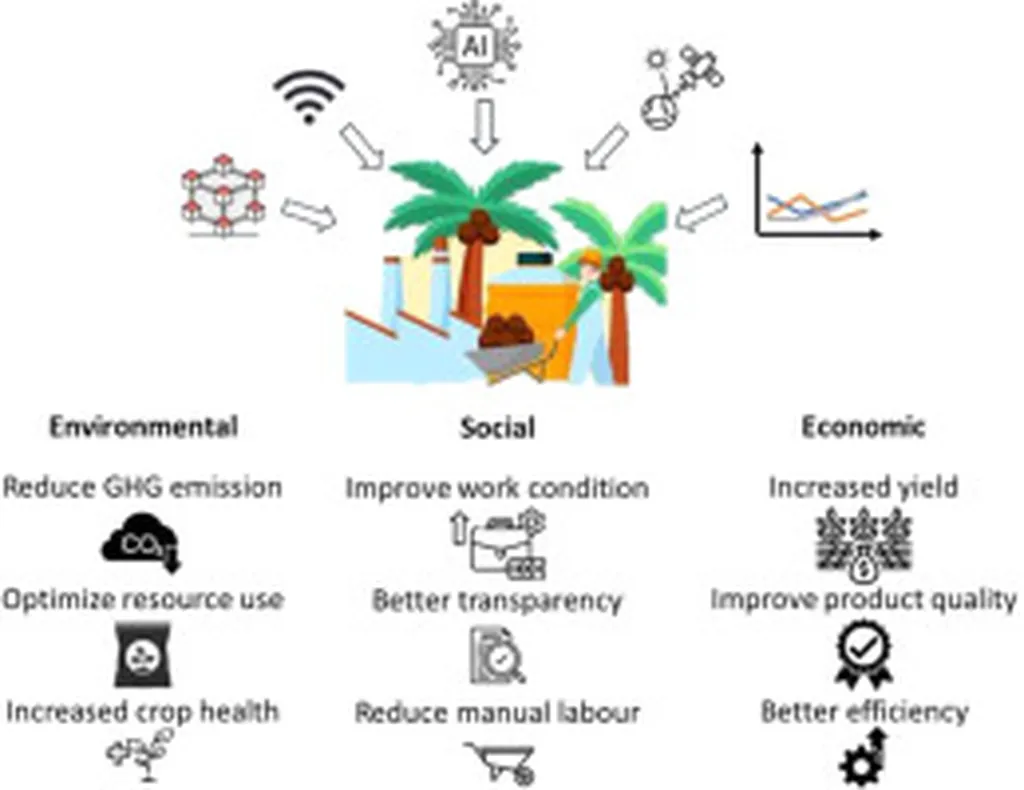In the heart of Southeast Asia, where the demand for palm oil continues to surge, a groundbreaking study led by Buntita Weerakitikul from the Remote Sensing & Geo-Spatial Science Research Unit at Prince of Songkla University, Phuket Campus, is revolutionizing how we monitor and manage oil palm plantations. By harnessing the power of multi-sensor remote sensing and advanced machine learning, Weerakitikul and her team have developed a novel approach to map oil palm plantations and detect stand age with unprecedented accuracy. Their findings, published in the journal Geomatica (which translates to “Geomatics”), could significantly impact the energy sector and sustainable agriculture practices.
The study addresses a critical need in the industry: accurate, up-to-date information on plantation extent and stand age. Traditional single-sensor approaches often falter when it comes to distinguishing mixed tropical vegetation and reconstructing planting histories, which are essential for yield forecasts and sustainability metrics. Weerakitikul’s team integrated a 38-year Landsat surface-reflectance archive with 2024 Sentinel-2 imagery, creating a cloud-native monitoring pipeline in Google Earth Engine (GEE). This innovative approach combines the long-term data from Landsat with the high-resolution imagery of Sentinel-2, providing a comprehensive view of oil palm plantations.
“We integrated the full 1987–2024 Landsat surface-reflectance archive (38 years) with 2024 Sentinel-2 imagery to build a cloud-native monitoring pipeline in Google Earth Engine (GEE),” Weerakitikul explained. “This combination allows us to capture both the historical context and the current state of the plantations, which is crucial for accurate age detection and yield forecasting.”
The team employed a Random-Forest (RF) model, trained on stratified field samples, to delineate plantation extent using a variety of data layers, including six Sentinel-2 bands, five vegetation/surface indices, three Sentinel-1-derived back-scatter layers, and two terrain variables. To estimate stand age, they developed a sophisticated method that locates the most recent year in which the smoothed Normalized Difference Vegetation Index (NDVI) dropped below its 20th percentile while the Bare-Soil Index (BSI) exceeded its 80th percentile. This approach effectively flags the latest planting or replanting events in the Landsat record.
The results are impressive. The multi-sensor classifier achieved an overall accuracy of 90.5% and a Kappa coefficient of 0.81, with balanced error rates for both oil palm and non-oil palm classifications. The age retrieval method demonstrated an RMSE of 4.0 years, revealing distinct replanting events that correspond to known market cycles. This spatially explicit age data is invaluable for yield and carbon-stock modeling, providing critical insights for sustainable palm-oil certification, carbon accounting, and land-use policy.
“We mapped plantations covering 561 km², or 60.9% of the study district,” Weerakitikul noted. “This level of detail is essential for informed decision-making in the energy sector and for ensuring sustainable practices in agriculture.”
The implications of this research are far-reaching. By combining the long-term data from Landsat with the high-resolution imagery of Sentinel-2, the study demonstrates a marked improvement over single-sensor methods for both extent mapping and age estimation. The workflow relies solely on free, globally available imagery and scalable cloud computing, making it immediately transferable to government and NGO monitoring programs.
As the demand for sustainable and efficient agricultural practices continues to grow, this research provides a robust tool for stakeholders in the energy sector and beyond. By delivering accurate maps of plantation area and stand age, it fills a critical information gap that can drive better land-use policies, improve carbon accounting, and support sustainable palm-oil certification.
“We believe this approach can be a game-changer for the industry,” Weerakitikul concluded. “It offers a scalable, cost-effective solution that can be applied globally, helping to ensure that palm oil production is both sustainable and profitable.”
In the quest for sustainable agriculture and responsible land use, this research stands as a beacon of innovation, offering a powerful tool for the future of the energy sector and beyond.

